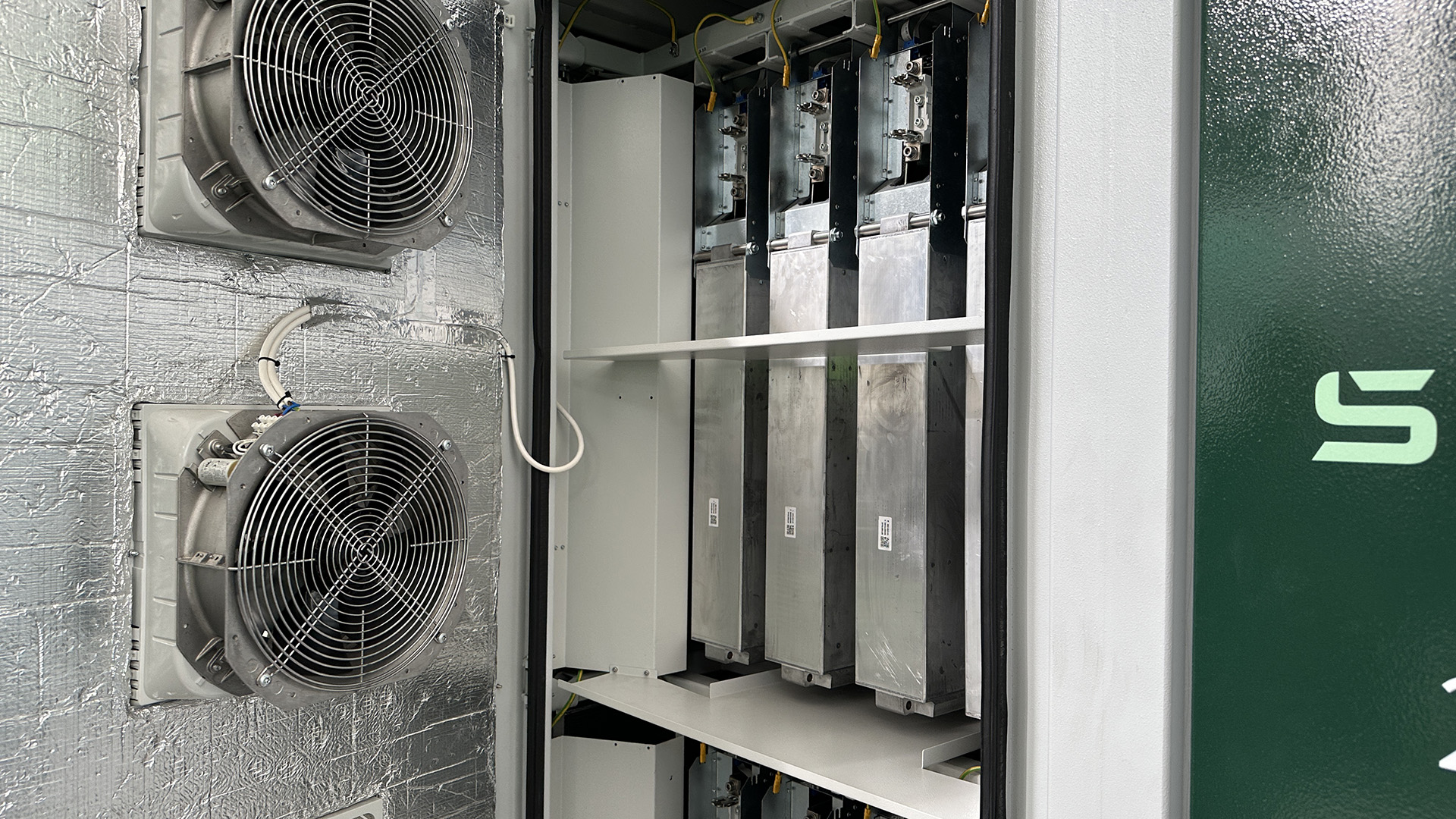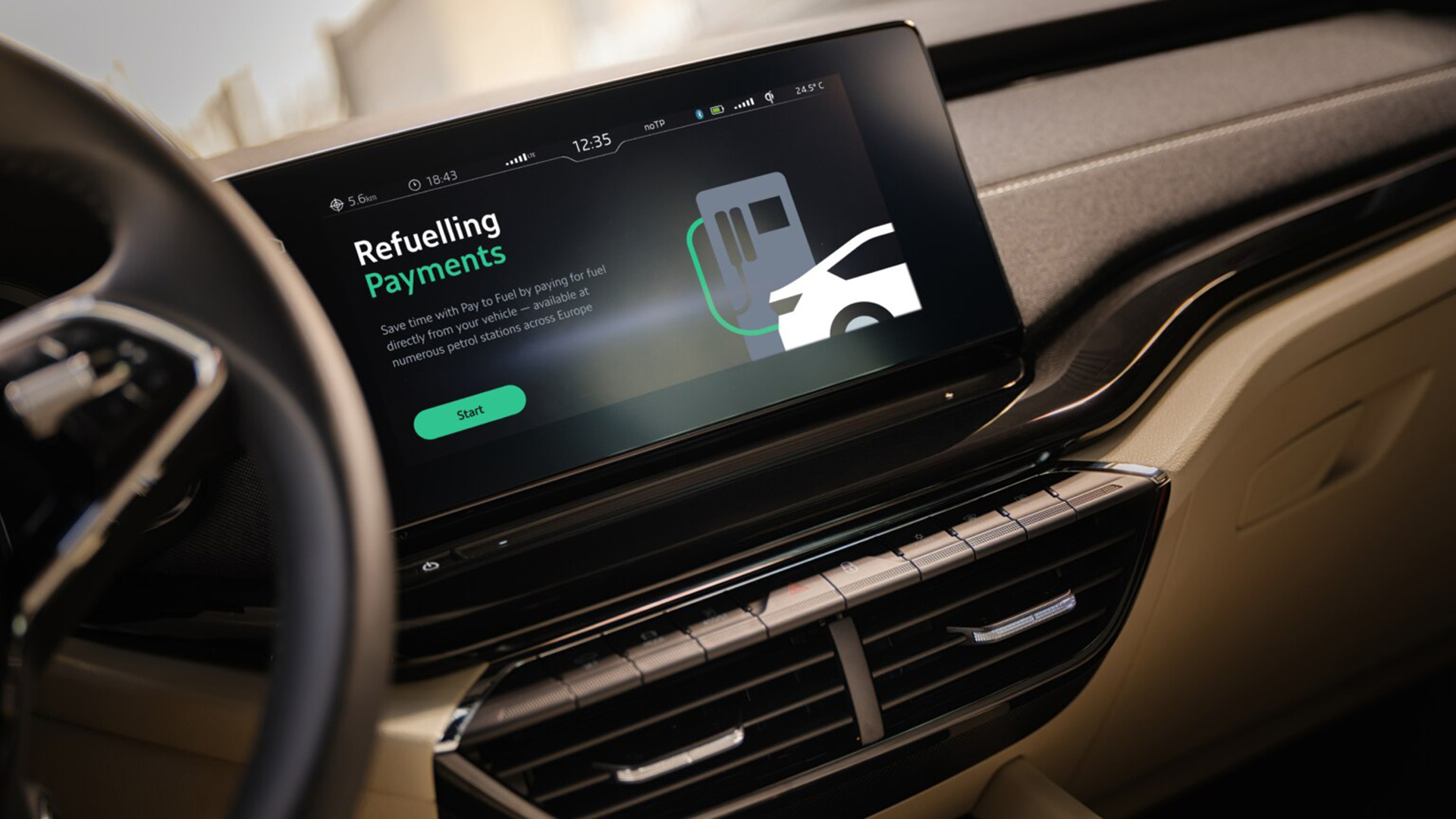
Skoda’s DigiLabs studio is now Skoda X, a new branded department focused on working with Eastern European start-ups to provide its digital services and solutions. This week, it showed off some of these new services being rolled out across Europe (and to the UK) later this year and into 2024. These services aren’t limited to its electric car range either.
At Skoda’s holistic user experience (HUX) centre in Prague, Jaroslav Pelant, Managing Director of Skoda X introduced me to some of these technologies, including a new car rental and test drive scheme, a pay-for-fuel service and digital offers on the infotainment system. I also got a closer look at its standalone charging station that uses recycled EV batteries.
While some of the tech is already live in select countries, with expansion due coming later this year, others are still in the testing phase. One such service still on test is the shop-to-car service, which could allow delivery companies to drop off parcels to your car, by giving them temporary and time-limited access to your boot. Though tricky to set up safely, this would be a great option for those mid-week parcels that otherwise would be sent back to the depot.
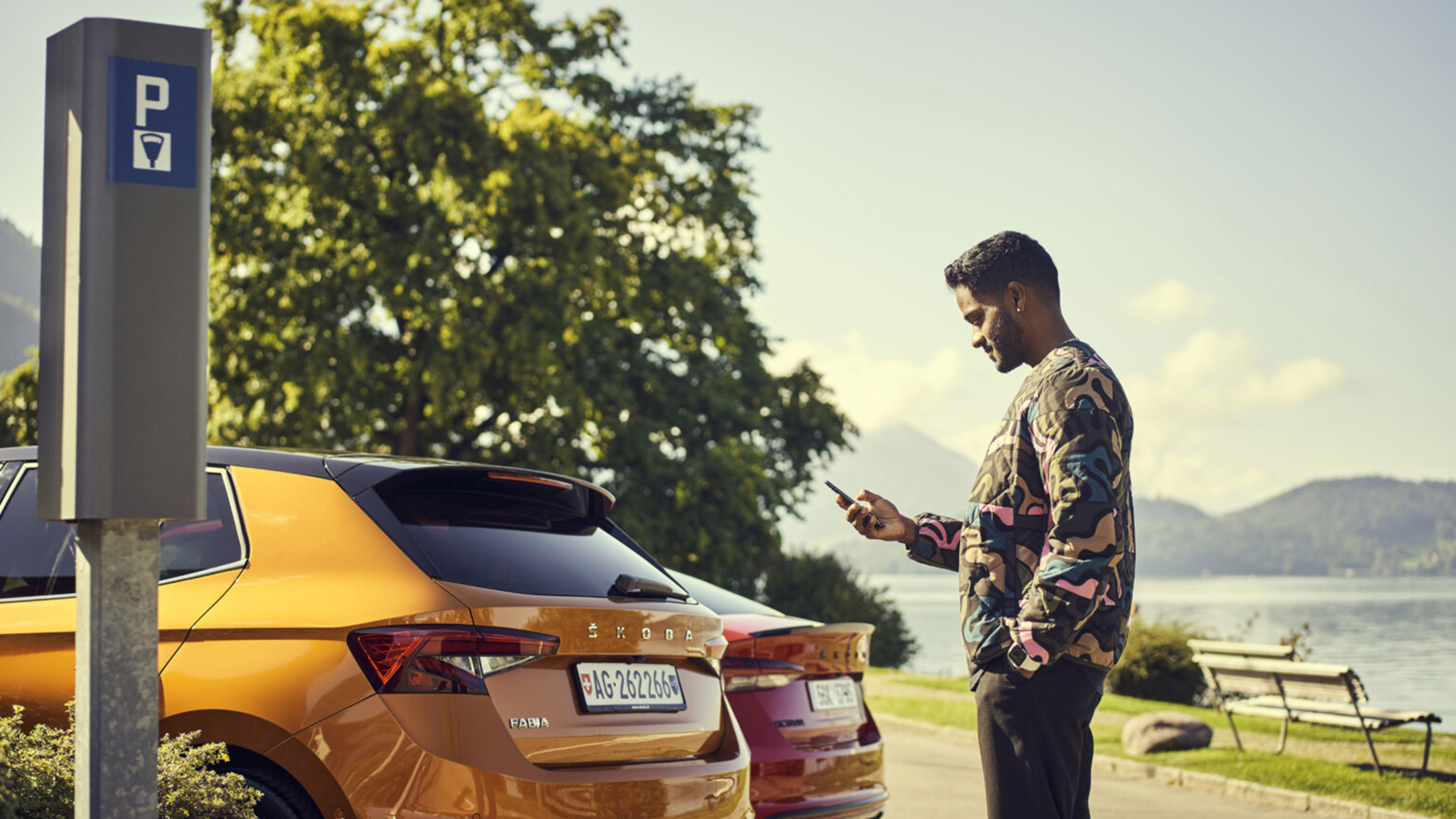
Test drive and rent a Skoda
HoppyGo is a P2P app that already offers car sharing in Europe but it is now being used as the basis for a new Skoda Test Drive app. Like the Turo app in the US, this gives customers the ability to make their personal cars available for other users to hire. It also allows prospective buyers the chance to book longer test drives on their terms. Prices are set by region, with some dealers offering longer loans for free in some countries. Unfortunately, there’s no word on when this service will come to the UK at present.
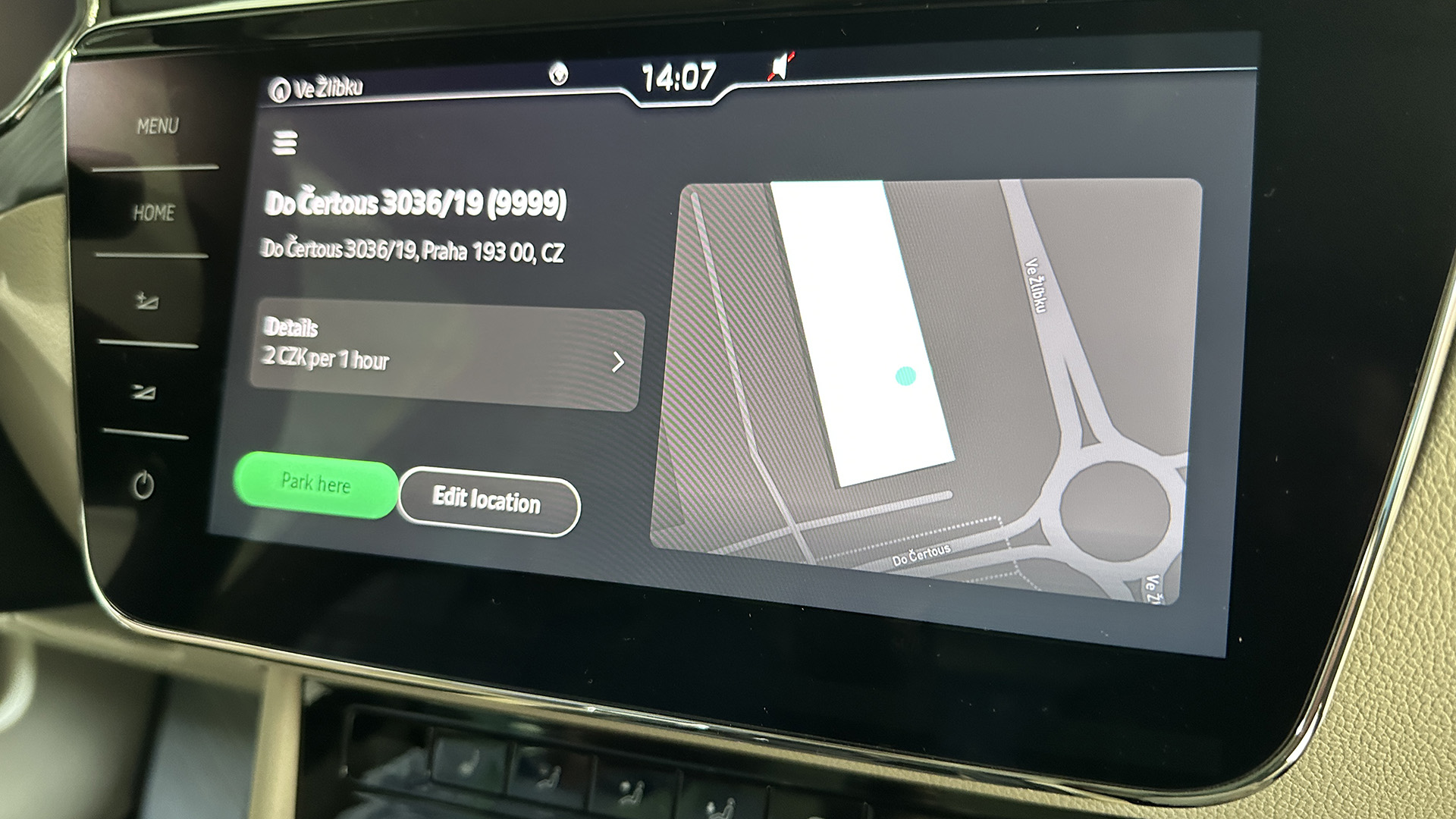
Pay to park and fuel
Pay to park and pay to fuel are two handy services that use the car’s GPS system and your payment details stored in its digital wallet, to make refuelling and parking simpler. The parking automatically detects when you are in a spot and lets you pay for the amount of time you want via the car’s touchscreen. This saves you from having to get out of the vehicle and find a code or a meter and means you don’t have to deal with multiple payment systems, as it is due to be live in 15 countries by the end of the year.
The pay-to-fuel service works in a similar way. When you drive up to one of the partner petrol stations, the car automatically gives you the option to pay for fuel via the touchscreen. Once authorised you get a limited time to start fueling and will then be sent the bill once finished. This service is rolling out across Europe this year and is set to include over 1600 fuel stops – including those in the UK.
Skoda already offers its Powerpass to pay for EV refuelling across Europe and is set to also grow as the number of partner chargers increases.
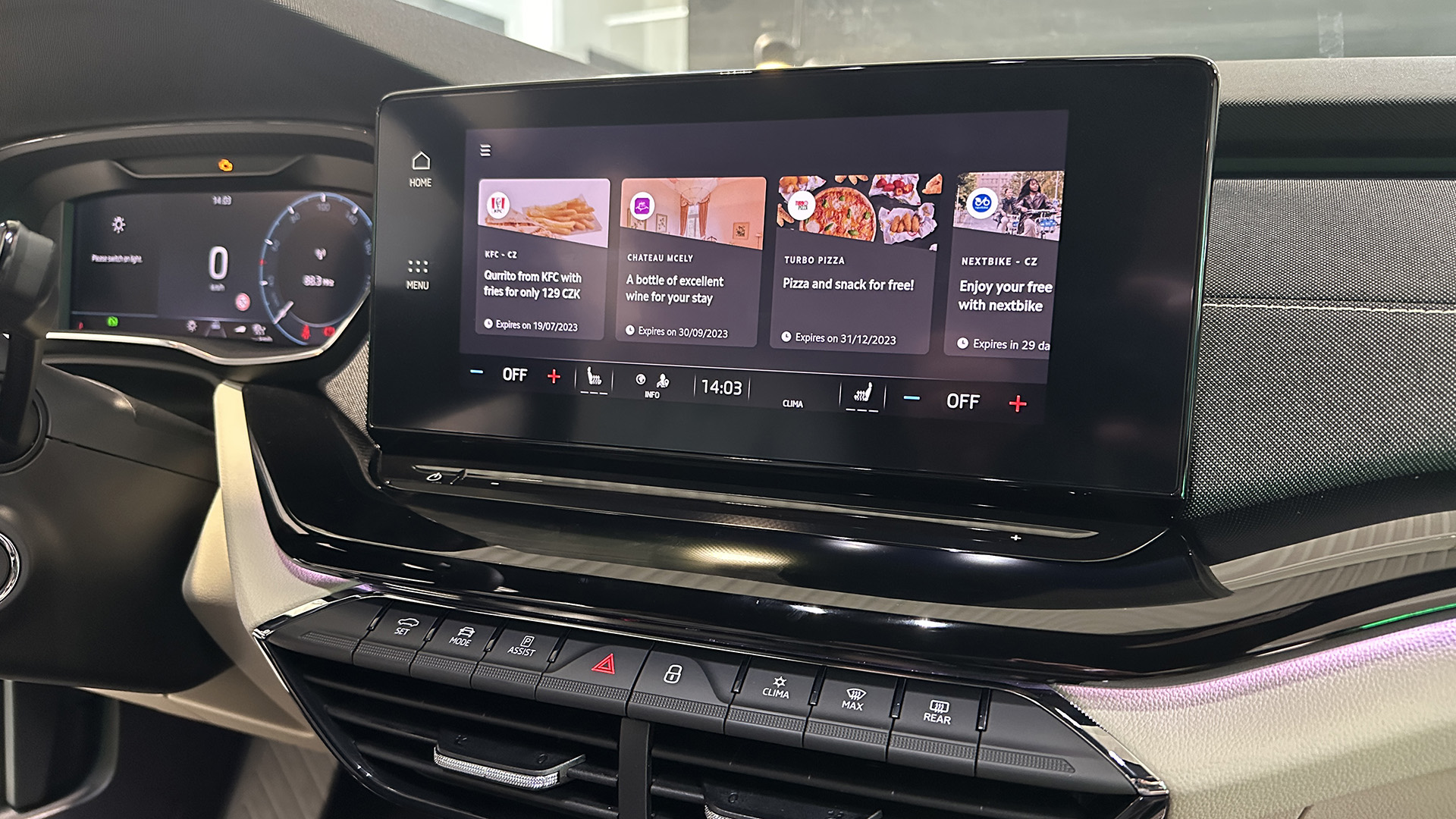
Skoda offers
Offers are already available in vehicles across Europe and the UK, with over 130 offers currently available. The idea is that the system uses your location and preferences to serve you up with the most suitable offers for that moment – money off refuelling when you’re low on fuel, food deals when you normally eat… The system learns your behaviour over time and improves the recommendations accordingly, with data tied to the car’s VIN.

2nd Life Battery Energy Storage charging hub
One of the most interesting pieces of technology on show here at HUX in Prague wasn’t actually in the car. This is a standalone charging station for electric vehicles that is powered by recycled EV batteries from the Skoda Enyaq – hence the name, 2nd Life. The batteries in the station are topped up using a standard connection from the electricity grid but when a vehicle is plugged in, they can provide the surge of power to deliver over 200kW of DC charging.
The stations are already being trialled at some Skoda dealers in the Czech Republic, and can also be topped up using wind or solar power and used completely off the grid. Each station harnesses the power of between eight and 12 recycled EV batteries, all safely contained in a special casing. I love the idea of smaller versions being made available for customers to have in their garages, to both store cheap energy at off-peak times, but also deliver faster charging when required.
